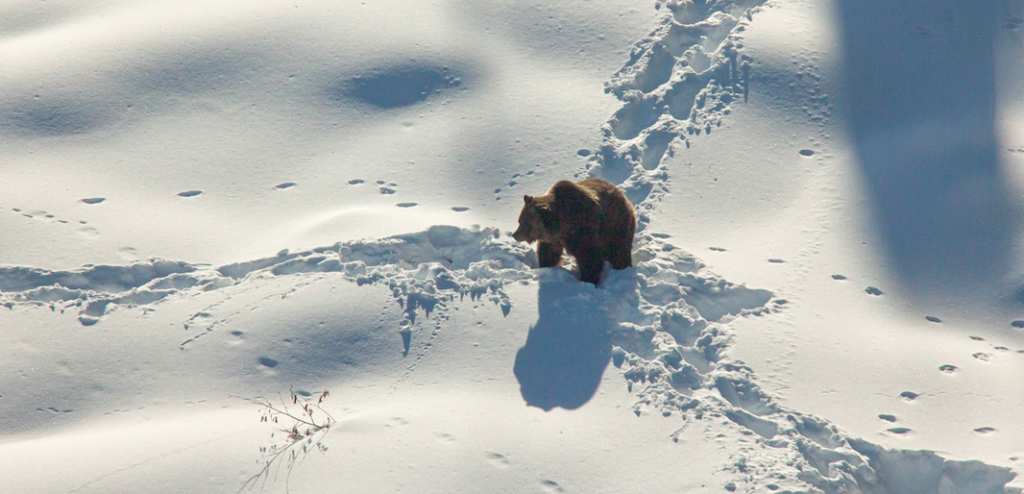The Eastern Gorilla – the largest living primate – has been put on the critically endangered list due to illegal hunting with four of the six great ape species now listed in that category, which is just one step away from going extinct.
The IUCN Red List of Threatened Species has just released its findings and reports that not only are four of the six great ape species now critically endangered, which is just one step away from going extinct, but that the remaining two are also under considerable threat.
The Plains Zebra is also in decline due to illegal hunting.
The IUCN Red List now includes 82,954 species of which 23,928 are threatened with extinction.
Mammals threatened by illegal hunting
The Eastern Gorilla (Gorilla beringei) – which is made up of two subspecies – has moved from Endangered to Critically Endangered due to a devastating population decline of more than 70% in 20 years. Its population is now estimated to be fewer than 5,000.
Grauer’s Gorilla (G. b. graueri), one subspecies of Eastern Gorilla – has lost 77% of its population since 1994, declining from 16,900 individuals to just 3,800 in 2015. Killing or capture of great apes is illegal; yet hunting represents the greatest threat to Grauer’s Gorillas. The second subspecies of Eastern Gorilla – the Mountain Gorilla (G. b. beringei) –is faring better and has increased in number to around 880 individuals. Four of the six great apes – Eastern Gorilla, Western Gorilla, Bornean Orangutan and Sumatran Orangutan – are now listed as Critically Endangered, whilst the Chimpanzee and Bonobo are listed as Endangered.
To see the Eastern gorilla – one of our closest cousins – slide towards extinction is truly distressing,” says Inger Andersen, IUCN Director General. “We live in a time of tremendous change and each IUCN Red List update makes us realize just how quickly the global extinction crisis is escalating. Conservation action does work and we have increasing evidence of it. It is our responsibility to enhance our efforts to turn the tide and protect the future of our planet.”
The once widespread and abundant Plains Zebra (Equus quagga) has moved from Least Concern to Near Threatened. The population has reduced by 24% in the past 14 years from around 660,000 to a current estimate of just over 500,000 animals. I
In many countries Plains Zebra are only found in protected areas, yet population reductions have been recorded in 10 out of the 17 range states since 1992. The Plains Zebra is threatened by hunting for bushmeat and skins, especially when they move out of protected areas.
Antelope in Africa
Three species of antelope found in Africa – Bay Duiker (Cephalophus dorsalis), White-bellied Duiker (Cephalophus leucogaster) and Yellow-backed Duiker (Cephalophus silvicultor) – have moved from Least Concern to Near Threatened. Whilst the populations of these species within protected areas are relatively stable, those found in other areas are decreasing due to continued illegal hunting and habitat loss.
“Illegal hunting and habitat loss are still major threats driving many mammal species towards extinction,” says Carlo Rondinini, Coordinator of the mammal assessment at Sapienza University of Rome “We have now reassessed nearly half of all mammals. While there are some successes to celebrate, this new data must act as a beacon to guide the conservation of those species which continue to be under threat.”
Good news for Giant Panda
This update of The IUCN Red List also brings some good news and shows that conservation action is delivering positive results.
Previously listed as Endangered, The Giant Panda (Ailuropoda melanoleuca) is now listed as Vulnerable, as its population has grown due to effective forest protection and reforestation.
The improved status confirms that the Chinese government’s efforts to conserve this species are effective. However, climate change is predicted to eliminate more than 35% of the Panda’s bamboo habitat in the next 80 years and thus Panda population is projected to decline, reversing the gains made during the last two decades.
Great news for Tibetan Antelope
Due to successful conservation actions, the Tibetan Antelope (Pantholops hodgsonii) has moved from Endangered to Near Threatened. The population underwent a severe decline from around one million to an estimated 65,000-72,500 in the 1980s and early 1990s. This was the result of commercial poaching for the valuable underfur – shahtoosh – which is used to make shawls. It takes 3-5 hides to make a single shawl, and as the wool cannot be sheared or combed, the animals are killed. Rigorous protection has been enforced since then, and the population is currently likely to be between 100,000 and 150,000.
Greater Stick-nest Rat successfully reintroduced
Other conservation successes include the Greater Stick-nest Rat (Leporillus conditor), endemic to Australia, which has improved status, moving from Vulnerable to Near Threatened. This is due to a successful species recovery plan, which has involved reintroductions and introductions to predator-free areas. This unique nest-building rodent is the last of its kind, with its smaller relative the Lesser Stick-nest Rat (Leporillus apicalis) having died out in the Twentieth Century. The resin created by the rats to build their nests is so strong that they can last for thousands of years if they are not exposed to water.
The Bridled Nailtail Wallaby (Onychogalea fraenata), has also improved in status, having moved from Endangered to Vulnerable. Endemic to Australia, this once common species had a dramatic population decline during the 19th and early 20th centuries due to the impacts of invasive species and habitat loss.
But a successful translocation conservation programme has established new populations within protected areas.




